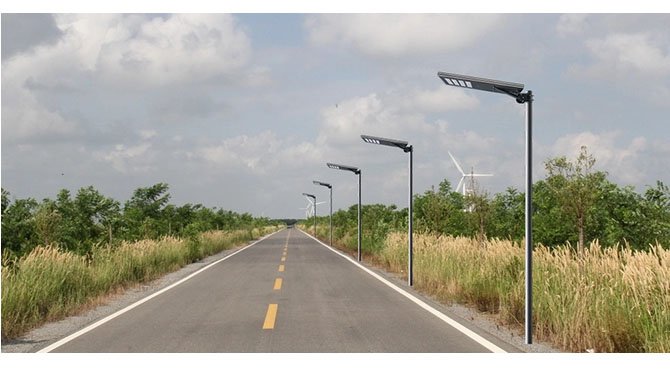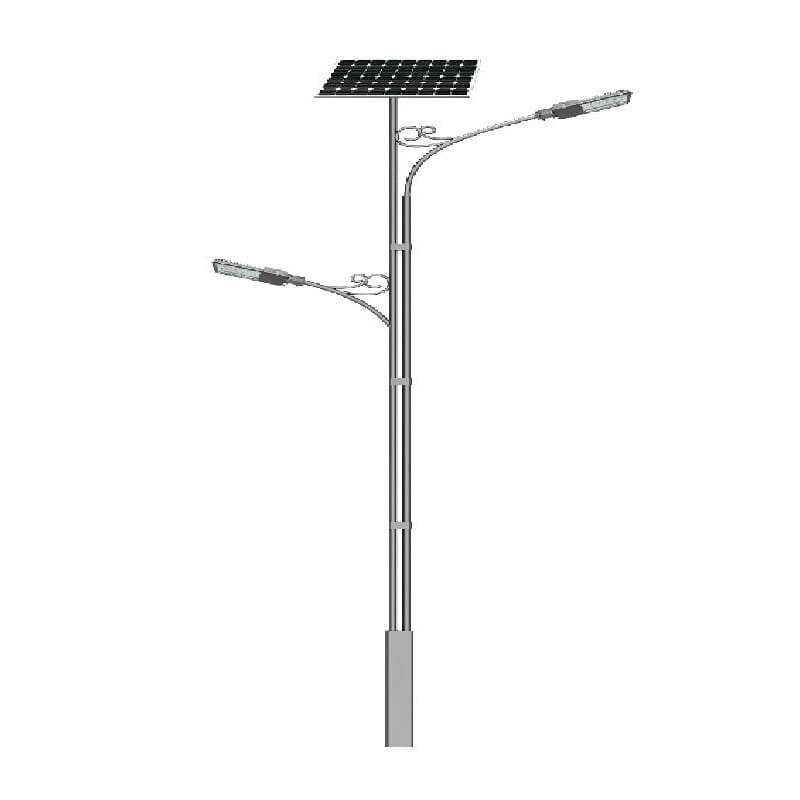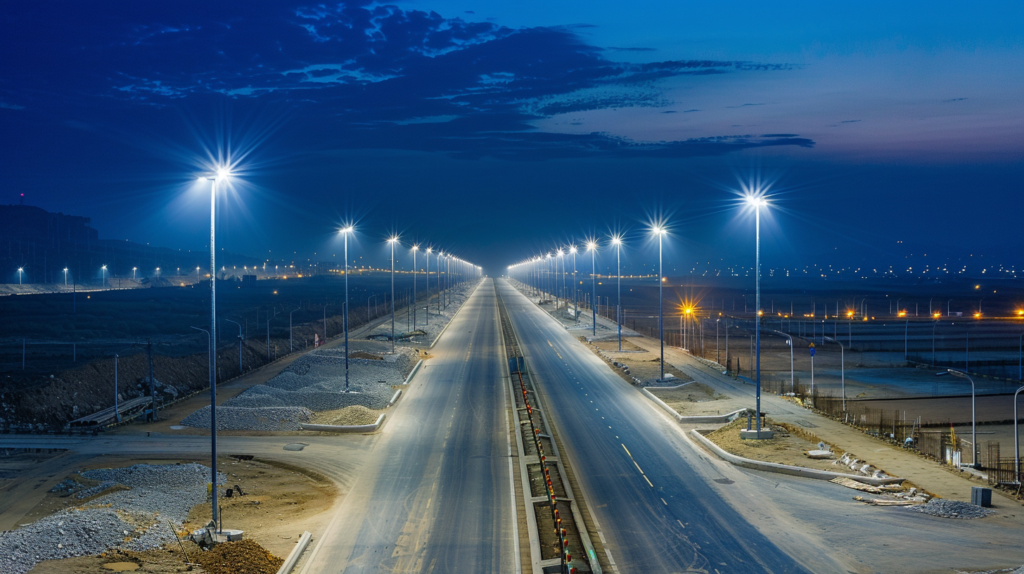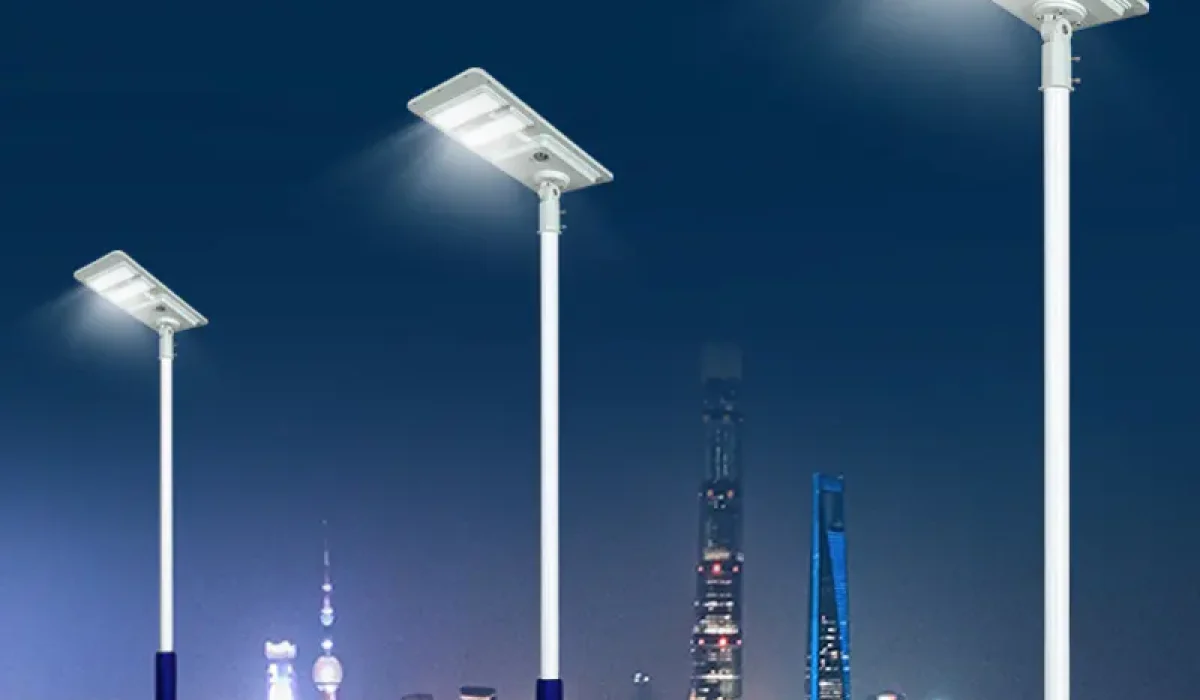Street lighting ensures safety and visibility for pedestrians and vehicles, playing a crucial role in urban planning. A well-thought-out lighting design improves road safety, reduces energy consumption, and enhances urban aesthetics.
The proper arrangement of luminaires and careful consideration of factors like pole height, spacing, and placement can ensure efficient and uniform lighting while minimizing costs and light pollution.
This guide explores common mounting arrangements and technical specifications that influence the effectiveness of LED street lighting projects.
What Are the Different Street Light Mounting Arrangements?

The arrangement of luminaires plays a critical role in determining the uniformity, efficiency, and cost of a lighting system. Choosing the right configuration depends on the width of the road, the desired brightness, and aesthetic considerations.
Single-Sided Arrangement
Luminaires are positioned on one side of the road. This setup is cost-effective and works well for narrow streets where the width does not exceed the pole height. Modern optics allow this method to illuminate wider areas when necessary.
Staggered Arrangement
Luminaires are alternated on both sides of the road in a zig-zag pattern. This arrangement provides better uniformity on roads that are 1 to 1.5 times the pole height in width.
Opposite Arrangement
Luminaires are installed directly opposite each other on both sides of the road. This layout is suitable for medium-to-wide roads and ensures even lighting distribution, making it a popular choice for main roads.
Twin Central Arrangement
Luminaires are mounted on T-shaped poles in the median. This method is used for wide roads or highways where the pole height matches or exceeds the road width. A wide median is required for this configuration.
What Are the Specifications for LED Street Lights?

To ensure optimal performance, LED streetlights must adhere to specific parameters related to pole height, placement, and spacing. Proper design minimizes glare, improves safety, and ensures energy efficiency.
1. Street Light Height
The height of the poles depends on the road type and application:
- 10–20 feet: Ideal for residential streets, parks, and walkways.
- 20–27 feet: Used for urban roads and commuter routes.
- 27–33 feet: Suitable for main roads and expressways.
- 40+ feet: Designed for large areas like airports or industrial zones.
2. Placement of Poles
Setback (Distance from Roadway)
The pole's distance from the curb or roadway edge ensures safety and optimal lighting. Setbacks typically range from 1–2 feet, reducing interference with traffic while maintaining effective illumination.
Boom (Arm) Length
The boom extends the luminaire closer to the roadway while keeping the pole at a safe distance. Common lengths include 1.5m, 2m, and 2.5m, with double booms used for two-way roads.
| Boom Length | Application |
|---|---|
| 1.5m | Narrow roads or walkways. |
| 2–2.5m | Urban roads and highways. |
Overhang
Overhang refers to the distance between the luminaire and the edge of the road. Keeping this under 25% of pole height prevents shadows and maximizes coverage.
Boom Tilt Angle
This angle determines how light is distributed. A slight tilt improves uniformity, but angles above 15° may cause glare. Modern designs often favor a 0° tilt to reduce light pollution.
Pole-to-Pole Spacing
Spacing is crucial for maintaining uniform illumination:
- For single-sided arrangements, spacing is usually 3–4.5 times the pole height.
- For staggered or opposite layouts, spacing can be increased to ensure better coverage.
| Pole Height | Recommended Spacing |
|---|---|
| 8 meters | 30 meters (single-sided). |
| 8 meters | 35 meters (staggered). |
Summary

Proper luminaire arrangements and specifications are the foundation of efficient street lighting. Key elements include:
- Mounting Arrangements: Single-sided, staggered, opposite, and twin central setups cater to various road types.
- Height and Placement: Correct pole height, setback, and boom length improve coverage and safety.
- Spacing and Angles: Optimal spacing and tilt angles ensure uniform illumination while minimizing glare.
By addressing these factors during the design phase, you can create lighting systems that enhance road safety, meet performance standards, and align with sustainability goals. Proper planning also simplifies future maintenance and system upgrades.


